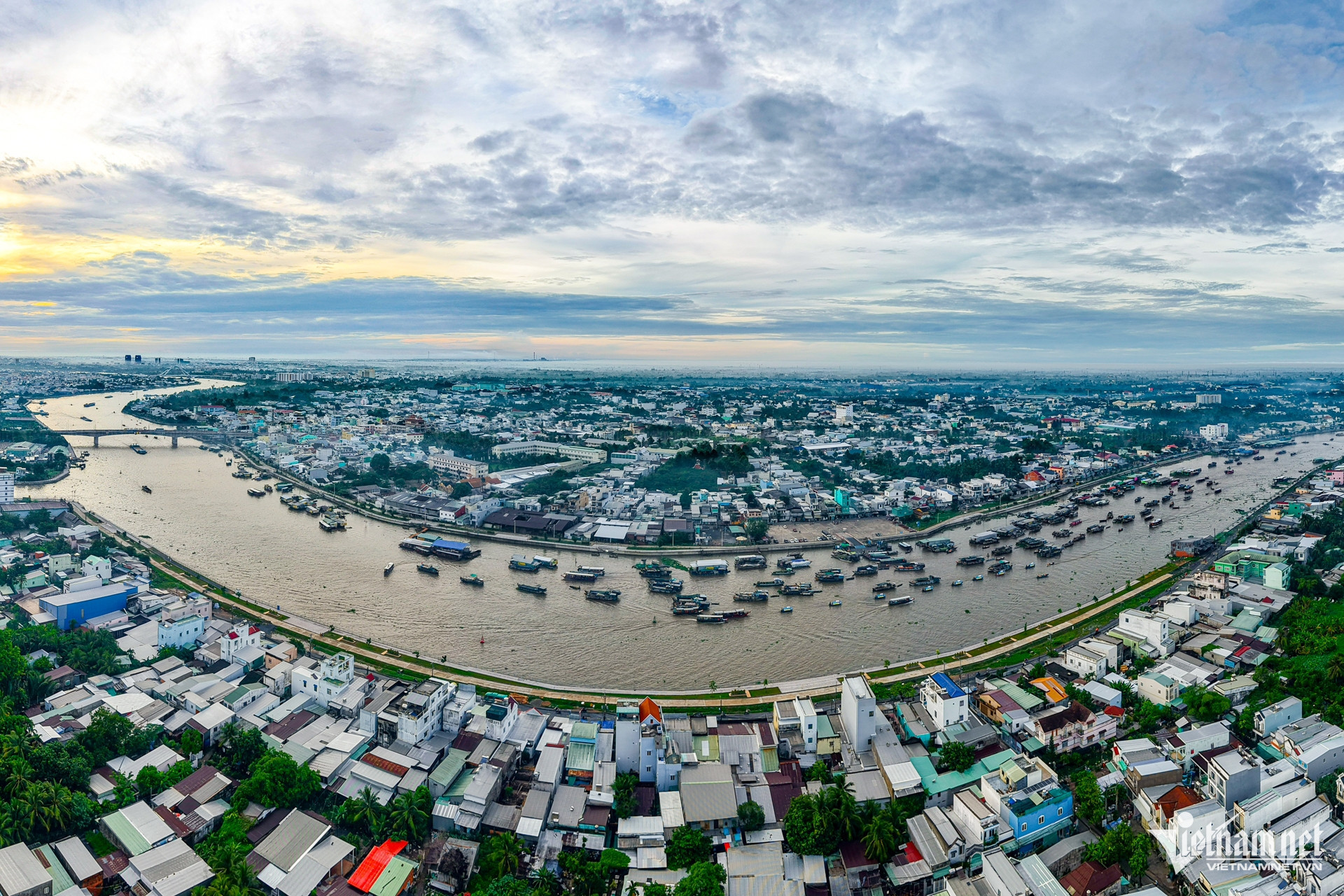
In an interview with VietNamNet, Tran Khac Tam, Chair of the Soc Trang Business Association and Vice Chair of the Mekong Delta Business Associations Council, shared practical insights and challenges facing leaders of the newly merged provinces and cities.
The merger of provinces opens up new development opportunities, with leaders granted greater authority and responsibilities. As a businessman, what specific actions do you believe the leaders need to take to seize this opportunity and drive breakthrough development?
The merger of provinces and cities, as affirmed by Party Chief To Lam, is a revolution in thinking about development space and national resource allocation.
Thus, I believe the actions of the new leadership in the initial days will determine the success or failure of this major policy.
First, I think the new leaders must immediately create a transparent, stable, and truly equitable business environment.
The initial post-merger phase may be turbulent, while businesses fear uncertainty. Therefore, it is necessary to quickly organize substantive dialogues with the business community to listen to and immediately resolve problems, and announce a clear and consistent "rules of the game" for the entire new business space.
The mindset of "if you can't manage it, ban it" and the entrenched "ask-and-grant" mentality, as repeatedly emphasized by Lam, must be eradicated immediately.
Second, leaders must rethink planning and resource allocation. The new, larger space offers greater development potential, but if we still think in the old way, dividing resources evenly, it will be difficult to create motivation to promote local development. Leaders need to determine key economic sectors and the driving forces, to set reasonable priorities.
For example, the new Can Tho now has a "gateway" to the East Sea through Soc Trang. This is a strategic advantage. What specific action is needed? Immediate planning and investment calls for an international-scale logistics system, connecting Hau Giang’s agricultural regions and Can Tho’s IZs with the deep-water Tran De port cluster. This must be done without delay.
Third, the administrative apparatus must be stabilized to ensure no disruptions to business operations or residents’ lives in the first post-merger period.
What are the key challenges local leaders have to overcome immediately after the merger?
The biggest and most immediate challenge, in my view, is the initial turbulence. Soc Trang and Hau Giang people worry about traveling long distances for administrative procedures. Businesses are concerned about policy changes and costs of updating documentation. Civil servants fear uncertainty about their job positions.
The second challenge is the risk of "conflict" in management culture and localism. For example, Can Tho, Soc Trang and Hau Giang have different socio-economic situations, customs and staff.
The challenge is to harmonize these differences, creating a unified system working toward a common goal, rather than unhealthy competition between localities.
Do you think that to gain the 8 percent growth rate or higher, provincial leaders will have to change their way of management?
Gaining 8 percent growth in 2025 and aiming for double-digit growth is an enormous pressure. To turn this ambition into reality, I believe three core issues must be addressed.
First, localities must "renew" old growth drivers and establish new growth drivers. Accordingly, it is necessary to clear and effectively use public investment capital, striving for 100 percent disbursement. It is also necessary to create a breakthrough mechanism to attract private capital and high-quality FDI capital into the fields that create great added value, such as deep processing of agricultural and aquatic products, logistics, high technology, etc.
For new growth drivers, Resolution 57 on science, technology, innovation, and digital transformation must be implemented decisively. In my province, the new leadership must create an "ecosystem" for innovation to thrive in the new Can Tho, turning it into the "Silicon Valley" of the Mekong Delta.
Second is infrastructure and connectivity. A revolution in infrastructure is needed. For instance, the Chau Doc – Can Tho – Soc Trang expressway is necessary but insufficient. A multimodal transport network seamlessly connecting IZs, raw material regions, seaports, and airports is essential to unlock the full potential of the new "super city" like Can Tho.
The third and most critical issue is the leadership’s courage and vision. Do they dare to think big, act boldly, and take responsibility? Are they willing to empower and provide opportunities to private enterprises with ambition and capability to lead key economic sectors?
In short, what we businesspeople expect from the new leaders is trust and genuine partnership. This trust must be built on four pillars: action, transparency, creation, and responsibility.
Thu Hang - Thanh Hue